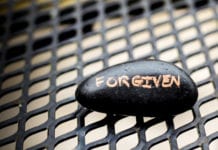There are always arguments in my family about who sits where at the table and why. And the gospels record a famous argument among the disciples about the seating arrangement in the new creation – The Thunder Brothers wanting the posh chairs on either side of Jesus (Mark 10:35-45).
Seating arrangements are especially important when you are leading a homegroup as well. Here are some thoughts on how you can subtly (and not so subtly) make chair choice change the dynamics of your time together:
- Your chair: like it or not, the chair you choose to sit in can give the wrong dynamic to the group. If it is taller than everyone else’s, or larger and more comfortable than everyone else’s, then you can unhelpfully give the impression that you are the teacher/guru that everyone else should listen to. If you insist on occupying the same chair every week – even if it’s your chair – your favorite chair – you can reinforce an idea that you are in charge/in control/top dog. Christian leadership is, remember, all about being a humble servant, not about being overbearing – see Jesus reply to the Sons of Thunder above. And it is about helping your group discover what is in God’s word for themselves – We want them to sit at Jesus’ feet – not yours.
- Their chairs: soft sofas are squashy armchairs are good for relaxing, but also for putting people to sleep. Think about ringing the changes every now and then, and putting people round a table on dining chairs. This can create a more “business-like” atmosphere that will help to focus people for some harder work on the Bible text. If you are tackling a particularly tricky part of scripture this may help. Particularly if you pike the table up with Bible dictionaries and commentaries etc, and encourage you group to grab and read.
- Eye contact: you most naturally make eye contact with whoever you are sitting opposite, and you can use this to good effect. If you are anything like a typical homegroup, then you will have some quieter, more shy people who are reticent to contribute. They will naturally gravitate to a quieter corner in the room so that they will not be noticed. Simple plan – sit opposite them, so that you catch their eye more often. These visual “body language clues” will encourage them to speak up.
- No eye contact: the opposite of the above. You may have a group member that always answers the question before anyone else gets a look in, and tends to hog the conversation. By sitting next to them, you will catch their eye less often. And you’ll be able to dig them in the ribs when they’ve gone on too long!
And while we’re on environment, you should also keep an eye on temperature (not too hot to put them to sleep – not too cold to distract them), oxygen (opening the window for fresh air will keep them more alert); and lighting (dim light creates a cosy atmosphere – but will not help people read small Bible print – especially older ones or those who struggle with sight.
Any more practical points that anyone can suggest for other homegroup chairmen?










